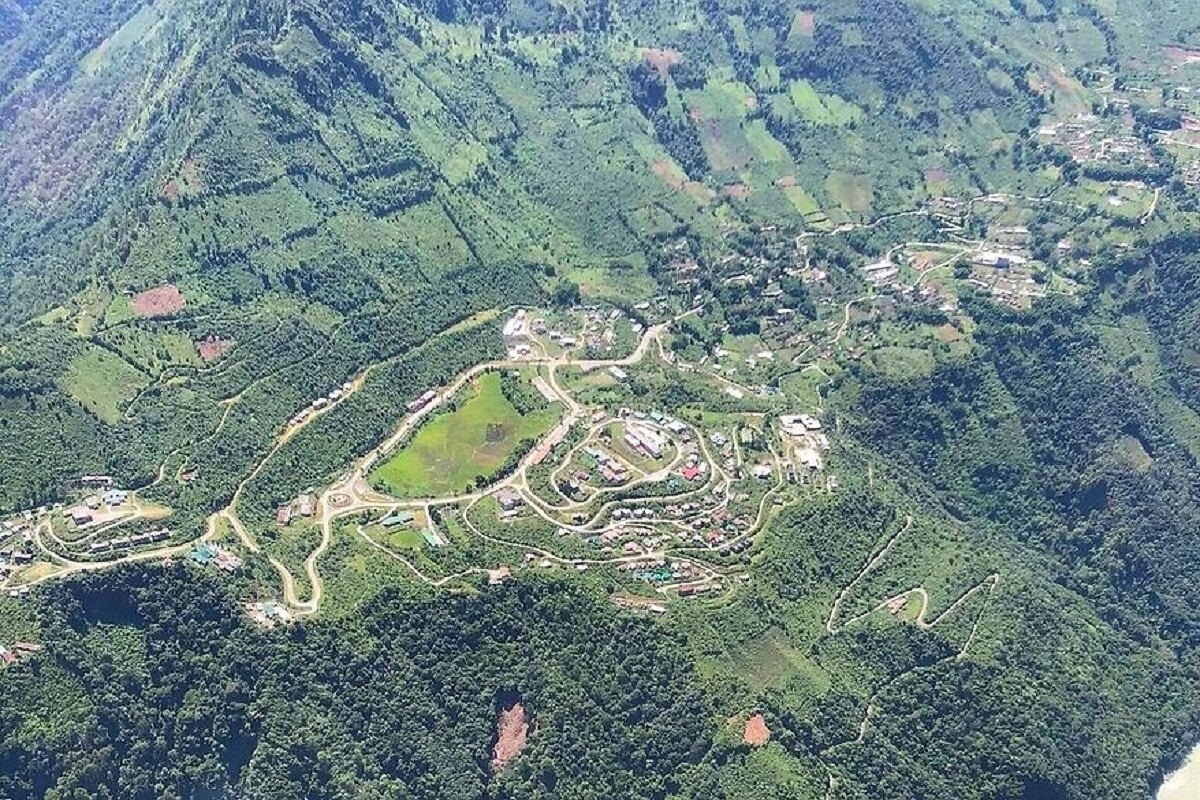Defence
Army Working With Arunachal Government For Development Of Model Villages On China Border
- China is building border defence villages along its frontier with India and Bhutan to assert its territorial claims.
- India has been trying to build an effective response to China's border consolidation project in Tibet.

Representative image. (Nitin Gokhale/Twitter)
The Eastern Command of the Indian Army is working with the government of Arunachal Pradesh for the development of model villages on the border, Lieutenant General Manoj Pande, General Officer Commanding-in-Chief Eastern Command, has said in an interview.
"We have come up with a border village initiative, in which we have identified three to four villages, which we have plans to develop as model villages," Lieutenant General Pande told senior journalist and national security analyst Nitin Gokhale in an interview on Bharat Shakti.
The government of Arunachal Pradesh, in its annual budget earlier this year, announced that it will develop three model villages along the border with Tibet as a pilot project, with plans to expand the programme to more border villages in the future. An allocation of Rs 30 crore was also made for this purpose by the state government in its budget.
The development came after reports of the construction of a village by the Chinese in Indian territory that it have controlled since 1959 in Arunachal Pradesh’s Upper Subansiri district made national headlines.
Since 2017, the Chinese Communist Party (CCP) has been building 628 border defence villages along its frontier with India and Bhutan.
China's border consolidation project, aimed at asserting its expansive territorial claims against India and Bhutan, has sanction from the top echelons of the CCP, including President Xi Jinping, who has mentioned border security and border infrastructure development in several speeches and communications related to Tibet.
During a visit to Tibet earlier this year, which started in the town of Nyingchi — close to the Indian border in Arunachal Pradesh, President Xi said "it is necessary to strengthen the construction of border infrastructure, and encourage people of all ethnic groups to take root in the border, guard the country and build their hometowns".
"Strengthen the border areas, do a good job in the four major issues of stability, development, ecology and strong borders," he added.
By the time China completes the current phase of the border villages programme, it would have moved over 240,000 people to the frontier.
The population of border areas in Tibet has grown by 10.5 per cent, Wu Yingjie, the CCP secretary for Tibet, revealed in August, at an event marking the 70th anniversary of the "peaceful liberation of Tibet".
While China settles new residents in the border areas, villages on the Indian side of the frontier have seen unprecedented out-migration.
In Uttarakhand, for example, over 185 villages in three districts bordering Tibet — Uttarkashi, Chamoli and Pithoragarh, were added to the list of "completely depopulated" or "ghost" villages in seven years between 2011 and 2018. Nine of these villages are located within an aerial distance of 5 km from the boundary.
India has been trying to build an effective response to China's border consolidation in Tibet. Ladakh's decision to do away with the Inner Line Permit requirement for domestic tourists to visit restricted areas close to the Line of Actual Control is also being seen as a response to the CCP's border consolidation project along India's frontier.
Also Read: Ladakh's Decision To Scrap Permit System For Tourists Is A Response To China's Border Consolidation Project In Tibet
Support Swarajya's 50 Ground Reports Project & Sponsor A Story
Every general election Swarajya does a 50 ground reports project.
Aimed only at serious readers and those who appreciate the nuances of political undercurrents, the project provides a sense of India's electoral landscape. As you know, these reports are produced after considerable investment of travel, time and effort on the ground.
This time too we've kicked off the project in style and have covered over 30 constituencies already. If you're someone who appreciates such work and have enjoyed our coverage please consider sponsoring a ground report for just Rs 2999 to Rs 19,999 - it goes a long way in helping us produce more quality reportage.
You can also back this project by becoming a subscriber for as little as Rs 999 - so do click on this links and choose a plan that suits you and back us.
Click below to contribute.
Latest